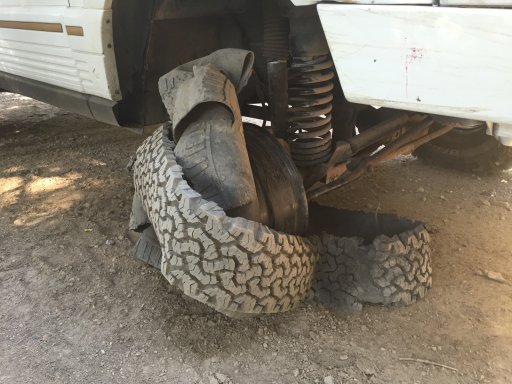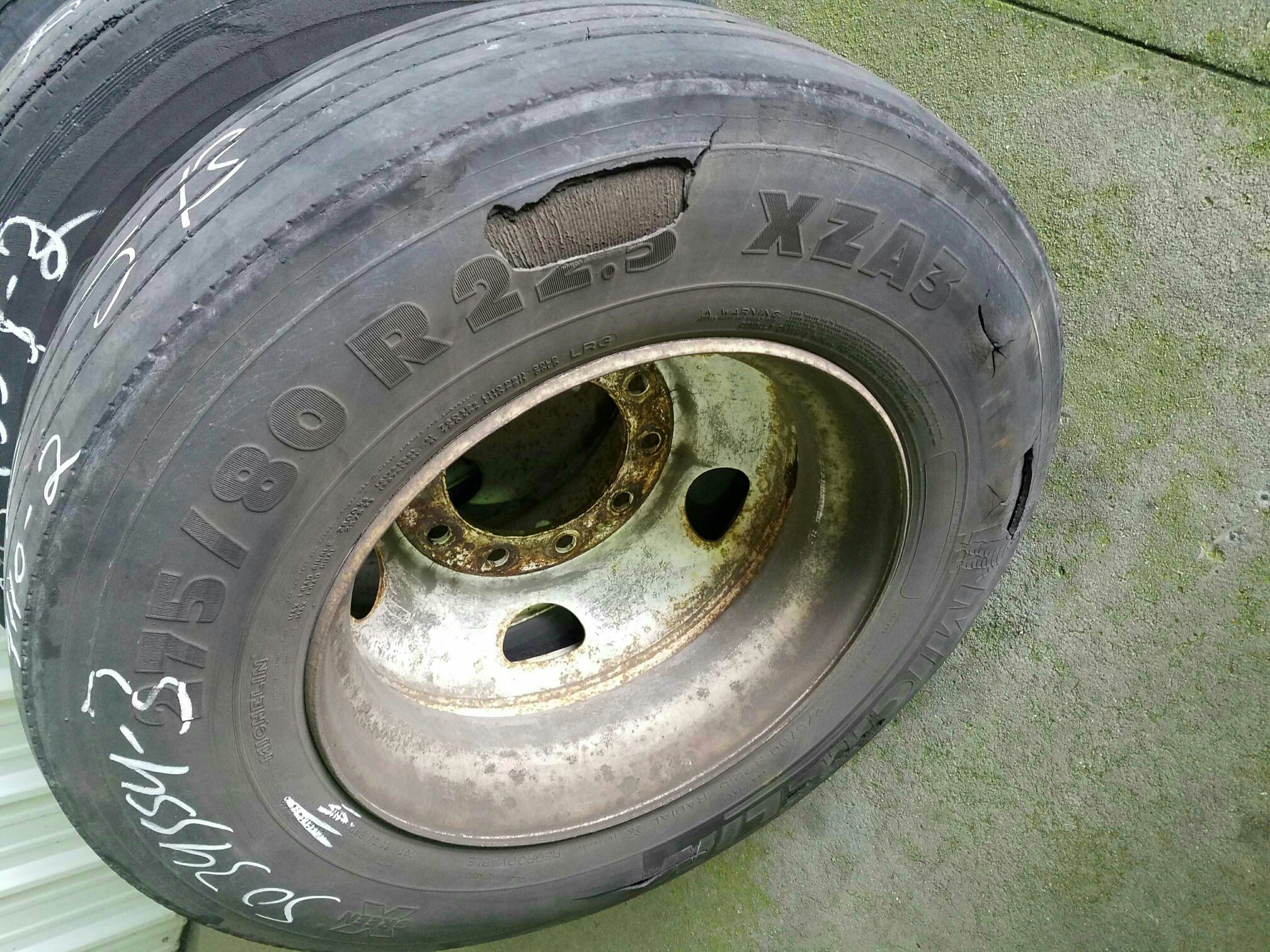
Pathfinder II
We've had lots of discussion on what type and brand of tires are best, but a question I'm going to need answered soon is: When should I replace my current set?
I replaced my factory Dunlop "AT's" after 600 miles when I cut a side wall on a minor trail. BFG KO's came to the rescue and have performed exceptionally well with ZERO flats. (And that's saying something in southeast New Mexico.) I have always aired down on trails and keep my speeds low. I have always aired back up before highway travel.
I now have 36,600 miles on the rig and while the tread life if still there, I'm wondering if the tire's integrity is still safe. I'm missing quite a few pieces of lugs, torn off during our trail rides (side note: it seems as if this is more than most folks have experienced with KOs). There are also several minor sidewall nicks on every tire. So while these tires are projected to run 50,000 miles, what percentage deduction should an overlander (who uses the rig as a daily driver and family hauler) apply to this number?
I actually posed this question to a BFG engineer at Expo West, and got the legal response as expected. He did explain that you can tell when a tire is damaged internally when you hear and audible "thump" from the tire when traveling at speed. Admittedly though, this could happen right before a blow out...
So, fellow Overlanders... what are your thoughts on this? I'm currently at 72% of the projected tread life. The tires look a little rough, but the tread is still great. No audible issues thus far. And no balance issues. Should I replace them? If not, how much longer should I go?
@WUzombies I'm tagging you since you have the most experience with failed tires.
I replaced my factory Dunlop "AT's" after 600 miles when I cut a side wall on a minor trail. BFG KO's came to the rescue and have performed exceptionally well with ZERO flats. (And that's saying something in southeast New Mexico.) I have always aired down on trails and keep my speeds low. I have always aired back up before highway travel.
I now have 36,600 miles on the rig and while the tread life if still there, I'm wondering if the tire's integrity is still safe. I'm missing quite a few pieces of lugs, torn off during our trail rides (side note: it seems as if this is more than most folks have experienced with KOs). There are also several minor sidewall nicks on every tire. So while these tires are projected to run 50,000 miles, what percentage deduction should an overlander (who uses the rig as a daily driver and family hauler) apply to this number?
I actually posed this question to a BFG engineer at Expo West, and got the legal response as expected. He did explain that you can tell when a tire is damaged internally when you hear and audible "thump" from the tire when traveling at speed. Admittedly though, this could happen right before a blow out...
So, fellow Overlanders... what are your thoughts on this? I'm currently at 72% of the projected tread life. The tires look a little rough, but the tread is still great. No audible issues thus far. And no balance issues. Should I replace them? If not, how much longer should I go?
@WUzombies I'm tagging you since you have the most experience with failed tires.









